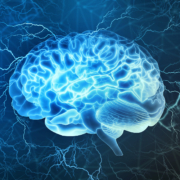The benefits of early intervention in neurodivergent children
Children with developmental delays such as taking a first step, smiling for the first time, or saying, “bye-bye,” are at an increased risk for long-term impairment. For children with any such delays, medical professionals will often recommend early intervention services such as speech therapy or occupational therapy. Early intervention is one of my favorite things about working with children; when we identify a deficit or delay early, we can provide the family with a pathway to gaining skills before it becomes too difficult to make substantial progress. In this article, I will address early brain development, the impact of early intervention services, and how neuropsychological evaluation supports early invention.
Brain development
Neurons are cells that make up the structure of the central nervous system (brain and spinal cord). Neurons can also be thought of as “gray matter” in brains due to the appearance of the densely packed cell bodies. Neurons talk to each other via axons and dendrites. Axons are long extensions from a neuron that carry a message from cell to cell, and these extensions are usually coated in myelin. These connections are sometimes referred to as “white matter” in the brain. Dendrites have a branching appearance and receive connections from another neuron’s axon. Brains are not fully developed at birth. The post-natal period is a crucial period marked by cell differentiation and maturation.
Dendrites grow at an accelerated rate in the first year of life. The dendrites grow to communicate with other cells. The brain makes more neurons and connections than it needs. It is a normal, healthy process for the brain to selectively prune connections, leaving the strongest and most efficient connections. The brain undergoes rapid dendritic growth between ages 8 months and 2 years, followed by pruning. Connections that remain are reinforced and supported through a process call myelination. Myelination “insulates” connections between neurons and helps messages travel faster. During this pruning period, early intervention services can help shape the neuronal connections made in a child’s brain.
According to Anderson, et al, (2019), the pattern of early post-natal brain development – overproduction of synapse – suggests that there are certain critical periods for acquisition of skill . A critical period represents a time where the brain undergoes rapid development, which allows for specific skills to achieve significant progression in cognitive or behavioral development. There is a degree of plasticity, or ability to change, during critical periods. A notable critical period is between the ages of 1.5 years and 5 years. The brain is primed for environmental modification. Environmental modifications include early invention as well as negative experiences such as trauma or neglect. These environmental influences can help or hurt. For example, positive and supportive homes with rich opportunities for learning can support helpful connections. Early intervention services can also help support growth and strengthening of helpful connections in areas of a child’s brain. On the other hand, adverse experiences like severe illnesses and injuries, abuse, and neglect can have a negative impact on brain development. This can have a lasting impact on a person’s functioning over the rest of their lives.
What is early intervention?
The Individuals with Disabilities Education Act (IDEA) defines early intervention services as programs targeting developmental delays in infants and toddlers. These services target developmental delays in physical, cognitive, communication, social/emotional, and adaptive domains. A wide range of early interventions are provided by public education services at no cost to the child’s family under IDEA. Early intervention can be delivered in a family’s home or at a preschool or daycare. Early intervention is often continued until the child reaches their developmental goals or transitions to kindergarten (and subsequently school-based special education services).
Early intervention services have long been recognized as important protective factors for children with developmental delays. Given the neuronal growth happening in the first 5 years of a child’s life, early intervention services can help a child learn crucial skills and potentially increase cognitive development overall. Positive environmental experiences can boost a child’s development. Children who receive early intervention services are more likely to have a reduction in overall impairment, both immediately and in the future. Interventions outside of the first 5 years of a child’s life can be helpful, but the progress is not as significant as those [interventions] delivered when the child is under 5 years old, due to the brain’s flexibility (“plasticity”) during this period.
Where does neuropsychology fit in?
Some children who need early intervention services had a complicated medical history. IDEA acknowledges that infants and toddlers at-risk for substantial developmental delays include those that had complications during prenatal development (intrauterine growth restriction, low birth weight, maternal infection, substance exposure, prematurity), perinatal complications (respiratory distress, brain hemorrhage), and early postnatal experiences (poor nutrition, failure to thrive, abuse/neglect).
Pediatric neuropsychologists specialize in childhood development and the brain-behavior connection. We have unique knowledge about developmental windows, brain plasticity, and evidence-based interventions. Evaluations for early intervention services that incorporate testing completed by a pediatric neuropsychologist can help a family understand how their child’s medical or neurological complication impact growth and development over time.
Being able to help a family understand a child’s strengths and weaknesses is a passion of mine. I find that my role as a pediatric neuropsychologist is to help the family use a child’s strengths to build up their weaknesses. I use data gathered from therapists, preschool or daycare providers, family members, and direct assessment and observation to help the family develop an early intervention plan that works for them and their child.
Pediatric neuropsychologists can also complete reevaluations of the child to monitor response to early intervention services. Ongoing reevaluation can help treatment teams adjust, increase, or taper off services per the child’s needs. It is especially rewarding to reevaluate a child after a period of early intervention and see the growth they made. Though we as professionals intuitively understand that early intervention services will not “cure” developmental issues in most cases, the goal is to help a child optimize and maximize their skills and capabilities in practical daily functions, academic skills, and social relationships.
This article has been factchecked by members of NAN’s Publications Committee. For more about that process, click here.









